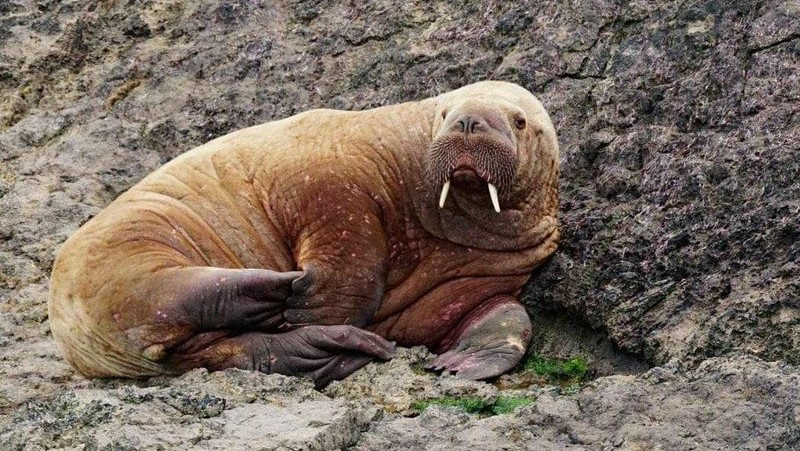Arctic walrus that drifted to Ireland is now hitching rides on passing ships
The walrus, now 280 miles south of his first sighting, has been drawing in tourists with his antics.

A walrus who accidentally made his way from the Arctic Circle to an Irish beach last month, likely while napping on a drifting iceberg, has continued his antics by clambering onto passing ships and even falling asleep on a slipway intended for lifeboats.
As the marine mammal, endearingly named Wally, has become somewhat of a tourist attraction, conservation groups and local authorities are worried that so much human attention could disturb the walrus. They are now warning tourists to leave the walrus alone following reports made over Easter weekend that Jet Ski riders, surfers and paddleboarders have been disturbing the blubbery, lounging mammal by getting too close.
A 5-year-old girl walking with her father first spotted Wally on March 14; he was plonked down on the rocks of Valentia island in County Kerry, Ireland, Live Science previously reported. No one knows how he arrived at a destination thousands of miles from his usual Arctic hangout, but one marine biologist speculated that the animal fell asleep on a drifting iceberg.
But Wally's journey did not end on that beach. He traveled 280 miles (450 kilometers) farther south, from County Kerry to Pembrokeshire, Wales, in just six days.
Related: 15 of the largest animals of their kind on Earth
Wally, who was visually identified by a conservation group as the same walrus seen in Ireland, has been stirring up mischief by hitching rides on passing ships. The cow-size mammal's cumbersome attempts to get aboard a dinghy ended up capsizing it, witnesses said.
A joint statement issued by the RSPCA, Tenby Harbour Master, Welsh Marine Life Rescue, Tenby Lifeboat Station, British Divers Marine Life Rescue, Natural Resources Wales, and CSIP Marine Environmental Monitoring has warned tourists not to get too close to Wally, who is protected by the 1981 Wildlife and Countryside Act.
Sign up for the Live Science daily newsletter now
Get the world’s most fascinating discoveries delivered straight to your inbox.
"We understand it's exciting and unusual to have the walrus take up a temporary residence in Tenby, and that over the bank holiday weekend, many people may wish to visit the area in the hope of catching a glimpse of him," they said in the statement. "However, it's in his best interests to be left alone as much as possible, so we're asking people to remember he is a wild animal and avoid the temptation to get near to him and disturb him."
The statement specifically called out recreationists in the nearby waters. "We're really concerned to hear reports that some people have tried to get close to him by using jet skis or paddle and surf boards — this really isn't in his best interest and we urge people to act responsibly this weekend and if they find themselves in the area, to enjoy him from a distance," the statement said.
It's rare for walruses to be seen so far south of the Arctic Circle, where they typically hunt for shellfish in shallow water and rest on nearby beaches and icebergs. The first recorded walrus sighting along the Irish coast was in 1897. Since then, fewer than two dozen additional walruses have been spotted in Ireland, Live Science previously reported.
Walruses are not the only Arctic animal to have been recorded taking a southern holiday: In 2018, a beluga whale was seen off Gravesend in Kent, and in 1949, two narwhals turned up in the Thames and Medway Canal.
Originally published on Live Science.

Ben Turner is a U.K. based staff writer at Live Science. He covers physics and astronomy, among other topics like tech and climate change. He graduated from University College London with a degree in particle physics before training as a journalist. When he's not writing, Ben enjoys reading literature, playing the guitar and embarrassing himself with chess.









